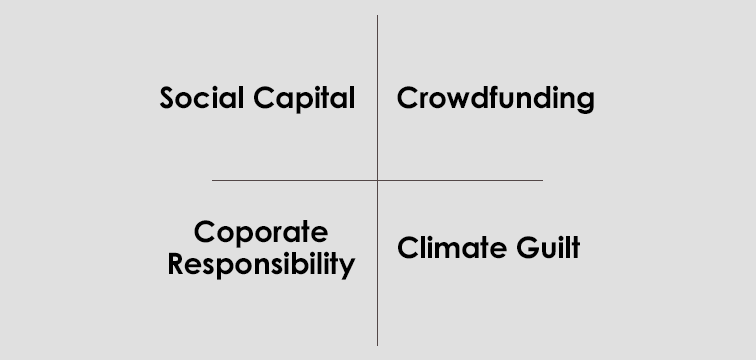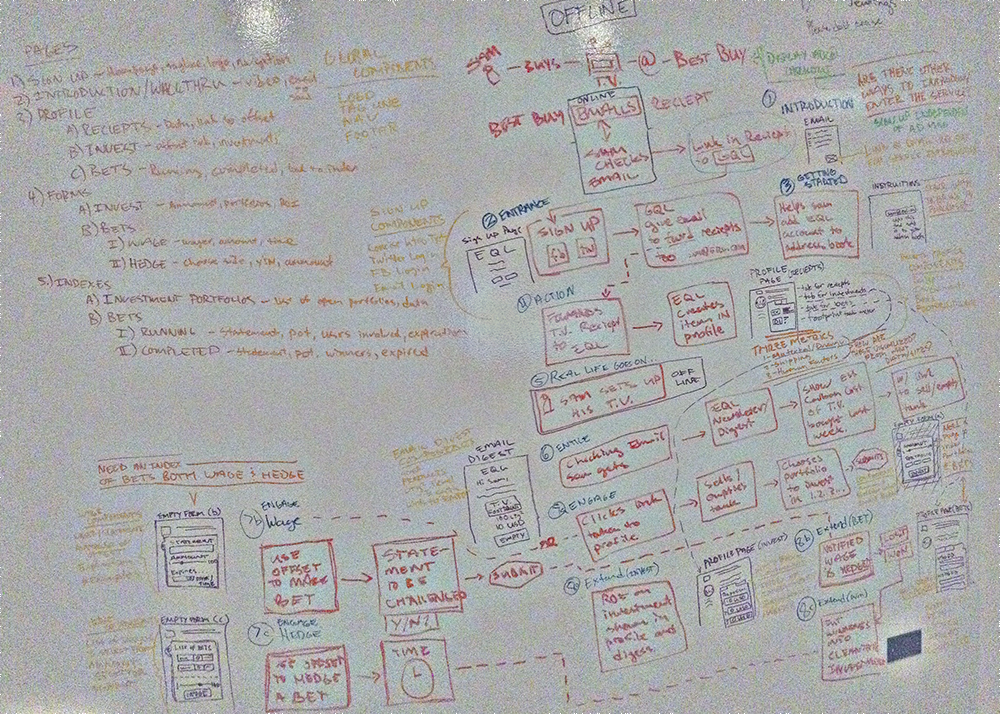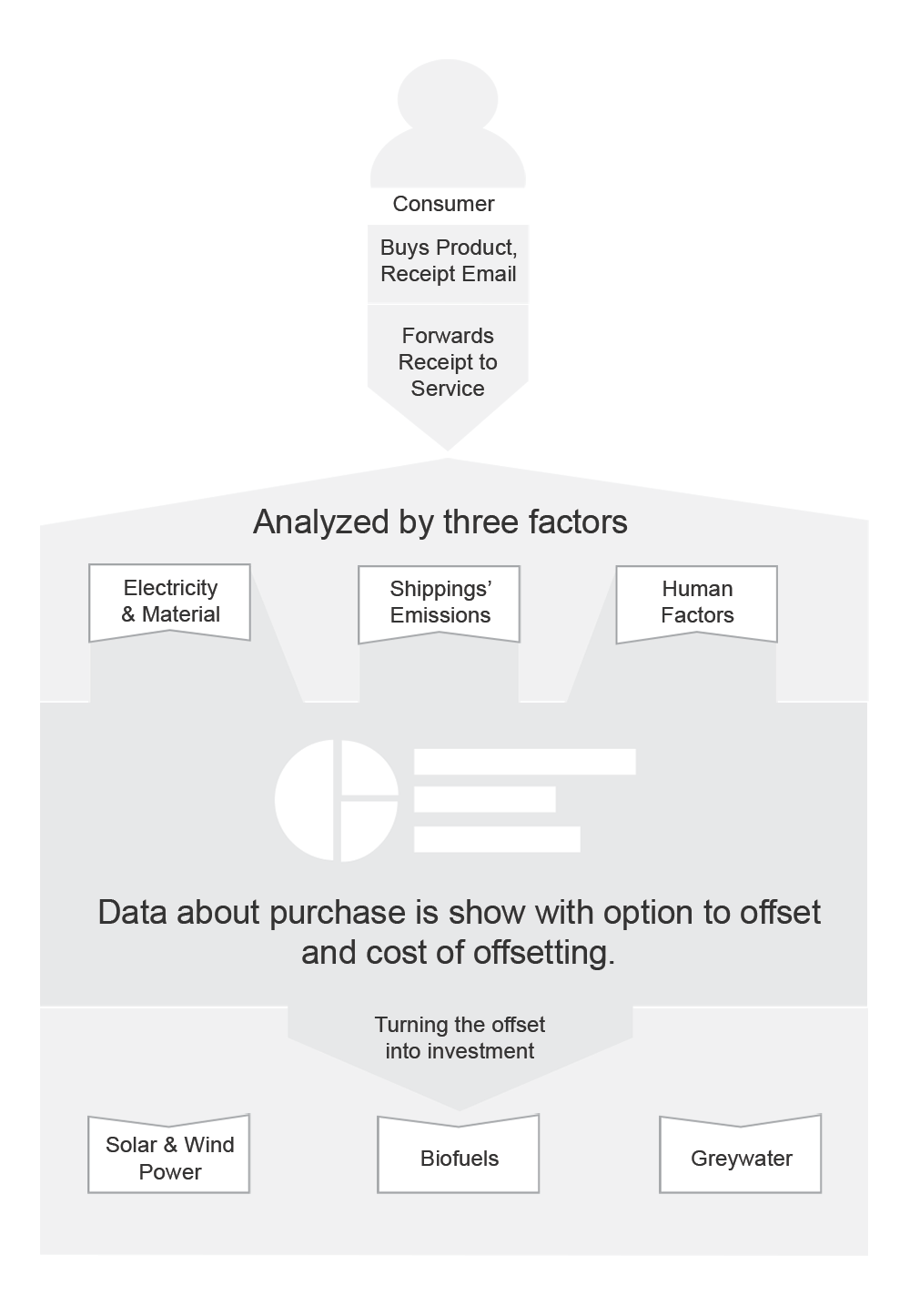Thesis - Emission as an Opportunity for Clean Energy Investment
####A new pivot. As designers know, and some that work with designers know, we’re indecisive. It’s a good thing. It allows us to “kill our darlings”. Throughout this journey I’ve had lots of darlings to kill. This process of letting go allows for creative solutions to seep strangely from the edges of the culmination of our iterations.

A year ago I was focused on beer. Yes, BEER. I saw beer as a way talk about issues revolving around small businesses. Small beer companies are growing fast and the communities they are popping up in adore them. Their adornment is no coincidence — small breweries employ more than 50% of the entire beer industry and make less than 10% of the product. They are mom and pops run, with real values, and deep social roots. They create a product that speaks for itself and in some cases, speaks for that community.
While looking at beer I came to the realization that beer is boundaries very strictly by the laws that govern distribution. And has been since prohibition. This is one of major reasons for many local breweries to stay local, even in this climate where craft beer movement is taking bars by storm. Even if these brewers did craft enough quantity to can and shelve — negotiating the logistics with the distribution strongholds is a nightmare. Due to this disconnect you’ll regularly find a brewer from Pennsylvania or Long Island dropping off his own beer at a upscale Manhattan restaurant, talking to the owners, building customer relationships one at a time.
Although the issue of beer distribution is fascinating and I could talk for days about what I’ve learned. In my research I came across some terribly disturbing news regaring shipping and it’s inherent emissions impact. Then it struck me that I was still looking at a larger problem space. That space being focused on the resonance of our consumerism. Specifically on how consumers can help challenge and change the market with more than just their wallets, by providing them with metrics around power and material cost, emissions from shipping, and human factors of the business that are selling or making the the products.
I’ve written on this blog about Climate Guilt in which I argue that the coperate businesses in power think fixing our climate only requires making consumers feel guilty about the products they buy, marking up green products, and then using that margin as a way to offset their emission impact. But not all companies have this backward logic at heart. I’ve been lucky enough to work with Etsy on a couple of prototypes around shipping and what I have found is documented here.
While there is no doubt that online commerce will continue to grow, shipping wasn’t going far enough into my problem space. There are many companies thinking up solutions to shipping. With solutions ranging from the outlandish Amazon drone to obscure UPS trucks not taking left turns in urban areas (which actually saved UPS millions in fuel cost last year).

Finally, I find myself defining my problem space in the four core areas shown above. Each of these are connected to each other. You will find that in my last post about my previous prototype I was debating whether I was meeting these as criteria.
####The latest prototype

This is the flow around my latest prototype. For now I only refer to it as EQL. As an acronym for the Great Equalizer (the name of my last prototype). I’d like to keep this name as I think it’s positive and supports the core of my goals to involve consumers more in the resonance of their purchases and allow for them an exchange in which they can offset without doing so outside of a place of feeling climate guilt.
The EQL project takes receipts from online and offline purchases and uses them as the entry point. Basically, the user forwards their receipts to the service. The data is then analyzed in three factors:
1) Energy and Material Cost of Emissions
2) Shipping Cost of Emissions
3)Human Factors of workers and producers.
These factors help inform the estimated cost of the offset. This is where the service differs from most offsetting services. Instead of loosely connecting the consumer to a not-for-profit, this aims to engage the user in investing that offset into a portfolio of clean technology research and development solutions. Those portfolios are set up by a company called Motif Investing. Their model is to set up portfolios with social benefits. They have one garnered specifically to clean tech. The graphic below shows the flow I just described.

Investing in clean technology is crucial. Andrew Winston, author of The Big Pivot says that clean energy markets will be worth 2.2 trillion USD by 2020. There is a large market here, and it’s getting bigger and bigger.
There is another output to the service as well, this one is a little looser at the moment as I am trying to work out the kinks. It involves allowing the user to set their offset up as a bet. The format would be a lot like Long Bets (from The Long Now Foundation) except not so long. The concept is centered around starting valuable conversations. This allows the users to make predictions and hedge them with real investments, much like traders on Wall St. do. The purpose is to facilitate another form of engagement that can help us inform better products or services to support. Based on their footprints in the three factors show above.
Overall this concept meets most of my core criteria. What it lacks in corporate responsibility it makes up for in social capital. The climate guilt aspect has been washed out a little by giving the users a investment platform behind their offsets. This helps engage the consumer with real life investments in clean technologies, whereas they won’t have to take large risk, instead, the small risk can build up into a large crowdfunded pool that will make real change and hopefully, a more sustainable future for our love of buying stuff.